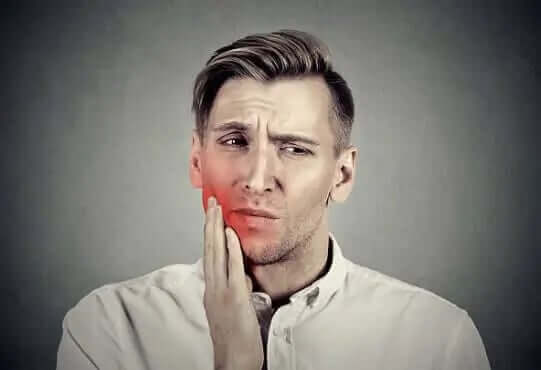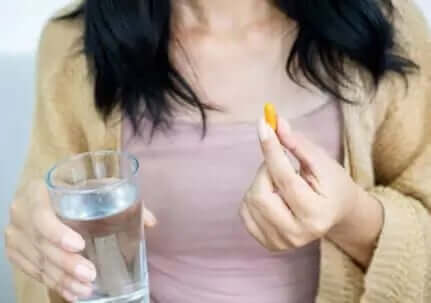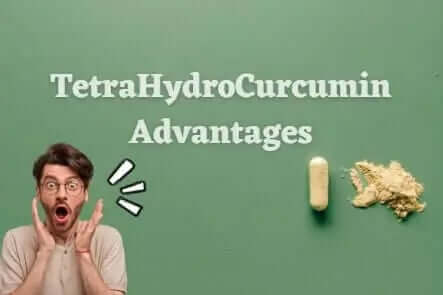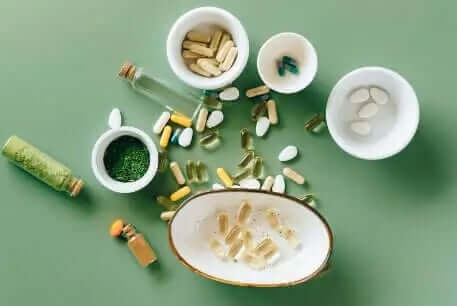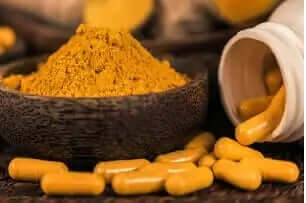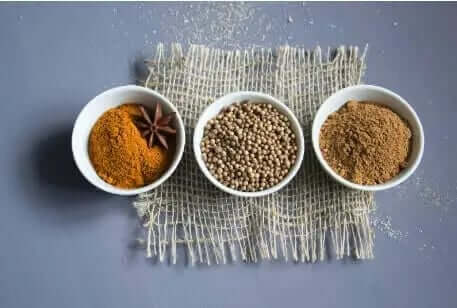Curcumin: The Revolutionary Natural Compound Transforming Dental Health
Curcumin, the golden compound found in turmeric, is revolutionizing dental care in ways that promise to transform millions of smiles worldwide. This powerful natural substance is now at the forefront of groundbreaking dental research, offering hope for better, safer treatments that could replace century-old practices. Recent scientific discoveries reveal how curcumin combats harmful oral bacteria while maintaining the strength and durability needed for modern dental procedures.
Understanding the Hidden Battle in Your Mouth
Every day, your mouth hosts an invisible battle between beneficial and harmful bacteria. Despite your best efforts with brushing and flossing, bacterial colonies establish themselves on your teeth through a sophisticated defense mechanism called biofilm formation. These biofilms act like bacterial fortresses, protecting harmful microorganisms from your body's natural defenses and conventional cleaning methods.
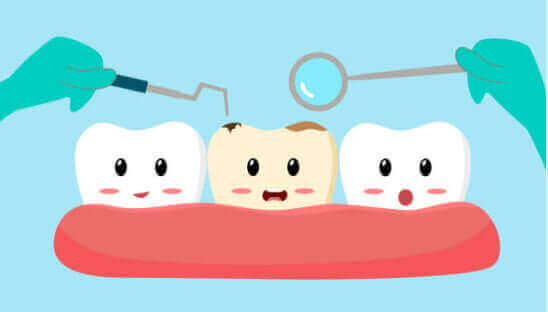 How bacterial biofilms lead to cavity formation - a process curcumin can help prevent
How bacterial biofilms lead to cavity formation - a process curcumin can help prevent
The primary culprit in this bacterial invasion is Streptococcus mutans, a bacterium that initiates dental plaque formation. Once established, this pioneer bacterium creates conditions that allow more aggressive bacteria to colonize your teeth, leading to cavities, gum disease, and other oral health problems. Traditional dental treatments have relied on materials like amalgam fillings, which resist bacterial growth but pose potential health risks due to mercury content.
Why Curcumin Changes Everything for Dental Health
The search for safer, more effective dental materials has led researchers to an unexpected hero: curcumin. This natural compound possesses a unique combination of properties that make it ideal for dental applications:
- Powerful Antimicrobial Action: Curcumin naturally fights harmful oral bacteria without disrupting beneficial microorganisms
- Anti-inflammatory Benefits: Reduces gum inflammation and promotes healing after dental procedures
- Antioxidant Protection: Guards against cellular damage in oral tissues
- Biocompatibility: Safe for long-term contact with oral tissues
- Stability: Maintains effectiveness under the harsh conditions of dental treatments
Breakthrough Research: Curcumin-Enhanced Dental Resins
 The future of dental care includes curcumin-enhanced materials for safer treatments
The future of dental care includes curcumin-enhanced materials for safer treatments
A groundbreaking international research collaboration published in Scientific Reports (2022) has demonstrated how curcumin can be incorporated into dental resins without compromising their structural integrity. This innovative approach addresses multiple challenges simultaneously:
The Science Behind Curcumin Dental Resins
Researchers developed a novel formulation combining traditional dental resin with varying concentrations of curcumin. Their comprehensive testing revealed remarkable results:
- Maintained Physical Properties: The curcumin-enhanced resins retained all necessary bonding strength and durability
- Bacterial Growth Inhibition: Successfully prevented S. mutans colonization on treated surfaces
- Long-term Stability: No leaching or degradation of curcumin over time
- Enhanced Biocompatibility: Safer for patients compared to traditional amalgam fillings
Real-World Impact: How Curcumin Benefits Your Dental Health
The implications of this research extend far beyond laboratory results. Consider these compelling statistics: dental diseases cost the global economy over $544 billion in 2015 alone, with 60-90% of children and most adults affected by dental cavities. Curcumin-based dental materials offer hope for:
Immediate Benefits for Patients
- Reduced Risk of Secondary Cavities: Curcumin's antimicrobial properties continue protecting teeth after treatment
- Faster Healing: Anti-inflammatory effects promote quicker recovery from dental procedures
- Natural Protection: Harnesses the power of nature without synthetic antimicrobials
- Mercury-Free Alternative: Eliminates health concerns associated with amalgam fillings
 Next-generation dental resins incorporating curcumin for superior bacterial resistance
Next-generation dental resins incorporating curcumin for superior bacterial resistance
Step-by-Step Guide to Maximizing Curcumin's Dental Benefits
While curcumin-enhanced dental materials await widespread clinical adoption, you can start benefiting from curcumin's oral health properties today:
- Dietary Integration: Include turmeric-rich foods in your daily meals to boost oral health from within
- Supplementation: Consider high-quality curcumin supplements with enhanced bioavailability
- Topical Applications: Use curcumin-containing oral care products for direct antimicrobial action
- Preventive Care: Combine curcumin intake with regular dental hygiene for optimal results
- Professional Consultation: Discuss curcumin-based treatments with your dentist as they become available
The Science of Curcumin's Antimicrobial Power
Curcumin disrupts bacterial biofilms through multiple mechanisms that make it uniquely effective against oral pathogens. Research shows that curcumin interferes with bacterial cell membranes, prevents biofilm formation, and disrupts established bacterial colonies. This multi-targeted approach means bacteria struggle to develop resistance, unlike with conventional antimicrobials.
Molecular Mechanisms of Action
At the molecular level, curcumin exhibits several fascinating properties that contribute to its dental health benefits:
- Cell Membrane Disruption: Penetrates and destabilizes bacterial cell walls
- Quorum Sensing Inhibition: Prevents bacteria from communicating and forming organized biofilms
- Enzyme Inhibition: Blocks key bacterial enzymes necessary for survival and proliferation
- DNA Damage Prevention: Protects healthy cells while inducing stress in bacterial cells
Beyond Cavities: Curcumin's Comprehensive Oral Health Benefits
The potential applications of curcumin in dentistry extend well beyond cavity prevention. Emerging research suggests benefits for:
Gum Disease Treatment
Periodontal disease affects millions worldwide, but curcumin's anti-inflammatory properties show promise in reducing gum inflammation, bleeding, and pocket depth. Studies indicate that curcumin mouthwashes and gels can significantly improve periodontal health markers.
Oral Cancer Prevention
Given curcumin's well-documented anti-carcinogenic properties, researchers are investigating its potential in preventing oral cancers. Early studies suggest that regular curcumin use may reduce the risk of precancerous lesions developing into malignancies.
Post-Surgical Healing
Dental surgeries often involve significant tissue trauma and healing time. Curcumin's ability to reduce inflammation and promote tissue regeneration makes it valuable for post-operative care, potentially reducing pain and accelerating recovery.
Practical Applications: Curcumin in Modern Dentistry
As dental professionals embrace curcumin-based treatments, several applications are emerging:
- Preventive Sealants: Curcumin-enhanced sealants provide long-lasting protection for children's teeth
- Endodontic Treatments: Root canal procedures benefit from curcumin's antimicrobial properties
- Orthodontic Applications: Reduces inflammation and discomfort during teeth alignment
- Implant Coatings: Prevents bacterial colonization around dental implants
- Periodontal Therapy: Adjunct treatment for gum disease management
The Future of Curcumin in Dental Care
The integration of curcumin into mainstream dental practice represents a paradigm shift toward natural, biocompatible materials. Ongoing research focuses on:
- Optimized Formulations: Developing curcumin concentrations that maximize benefits while maintaining material properties
- Delivery Systems: Creating sustained-release mechanisms for long-term protection
- Combination Therapies: Pairing curcumin with other natural compounds for synergistic effects
- Clinical Trials: Large-scale studies to validate laboratory findings in real-world settings
Success Stories: Early Adopters Share Their Experiences
While widespread clinical use awaits regulatory approval, some forward-thinking dental practices have begun incorporating curcumin-based treatments with encouraging results. Patients report reduced sensitivity, fewer infections, and improved overall oral health. These early success stories fuel optimism about curcumin's potential to transform dental care.
Taking Action: Your Path to Better Oral Health with Curcumin
You don't need to wait for curcumin-enhanced dental materials to benefit from this remarkable compound. Start your journey to better oral health today by:
- Choosing Quality Supplements: Select bioavailable curcumin formulations for maximum absorption
- Creating Curcumin Rinses: Mix curcumin powder with warm water for a natural antimicrobial mouthwash
- Eating Turmeric-Rich Foods: Incorporate golden milk, turmeric tea, and curry dishes into your diet
- Maintaining Regular Dental Care: Continue professional cleanings while adding curcumin to your routine
- Staying Informed: Follow developments in curcumin dental research for emerging treatments
The convergence of ancient wisdom and modern science in curcumin research offers unprecedented opportunities for improving oral health naturally. As dental professionals continue exploring this golden compound's potential, patients worldwide can look forward to safer, more effective treatments that harness nature's power to protect and heal.
Discover more about how Curcumin can transform your health journey and explore the latest research developments!
Frequently Asked Questions About Curcumin and Dental Health
What makes curcumin effective against dental bacteria?
Curcumin possesses unique antimicrobial properties that disrupt bacterial cell membranes and prevent biofilm formation. Unlike traditional antibiotics, curcumin works through multiple mechanisms, making it difficult for bacteria to develop resistance. Its natural origin also means it's gentler on beneficial oral bacteria while effectively targeting harmful pathogens like Streptococcus mutans.
How soon will curcumin-based dental treatments be available?
While research shows promising results, curcumin-enhanced dental materials are still undergoing clinical trials and regulatory approval processes. Early adoption may begin within 2-3 years in progressive dental practices, with widespread availability expected within 5-7 years. However, you can start benefiting from curcumin's oral health properties today through supplements and dietary sources.
Can I use curcumin supplements to improve my dental health now?
Absolutely! High-quality curcumin supplements can support oral health by reducing inflammation and fighting bacteria systemically. Look for formulations with enhanced bioavailability, such as those containing piperine or using liposomal delivery systems. Combine supplementation with good oral hygiene practices for optimal results.
What's the difference between turmeric and curcumin for dental health?
Turmeric is the whole spice containing 2-5% curcumin, while curcumin is the concentrated active compound responsible for most health benefits. For dental health applications, concentrated curcumin extracts provide more potent antimicrobial and anti-inflammatory effects. However, whole turmeric in your diet still offers valuable benefits and works synergistically with other compounds.
Are there any side effects of using curcumin for oral health?
Curcumin is generally very safe with minimal side effects. Some people may experience temporary yellow staining of teeth when using curcumin rinses, which can be easily removed with regular brushing. High doses of oral supplements may cause mild digestive upset in sensitive individuals. Always consult with healthcare providers before starting new supplements, especially if you take medications.
How does curcumin compare to traditional dental antimicrobials?
Curcumin offers several advantages over traditional antimicrobials: it's natural, doesn't contribute to antibiotic resistance, has anti-inflammatory benefits beyond just killing bacteria, and doesn't disrupt the beneficial oral microbiome as aggressively. While chlorhexidine and other antimicrobials may show stronger immediate effects, curcumin provides gentler, long-term protection without harsh side effects.
Can children benefit from curcumin for dental health?
Yes, curcumin is safe for children and offers excellent preventive benefits. Since 60-90% of children experience dental cavities, incorporating curcumin through diet or age-appropriate supplements can help protect developing teeth. Curcumin's natural origin makes it an attractive alternative to synthetic chemicals in children's oral care products. Always consult pediatric dentists for specific recommendations.
What's the best way to use curcumin for gum disease?
For gum disease, combine systemic and topical curcumin applications. Take bioavailable curcumin supplements daily to reduce overall inflammation. Create a curcumin mouth rinse by mixing 1/2 teaspoon of curcumin powder in warm water and swishing for 30-60 seconds twice daily. Some dental practices now offer professional curcumin gels for deeper periodontal treatment. This multi-pronged approach maximizes healing potential.
Will curcumin-based fillings be more expensive than traditional options?
Initial costs may be slightly higher due to research and development investments, but long-term savings are expected. Curcumin-enhanced materials should reduce the need for replacement fillings and secondary treatments due to their antimicrobial properties. Additionally, avoiding mercury-containing amalgam eliminates potential health-related costs. As production scales up, prices will likely become comparable to or lower than current alternatives.
How can I find dentists using curcumin-based treatments?
Currently, curcumin-based dental materials are primarily in research settings, but progressive biological and holistic dentists may offer curcumin-containing treatments. Ask your dentist about natural antimicrobial options and their awareness of curcumin research. Join online communities focused on biological dentistry to stay informed about practices adopting these innovations. As availability increases, professional dental associations will likely maintain directories of providers offering curcumin-based treatments.

